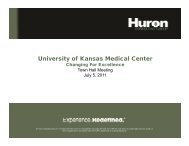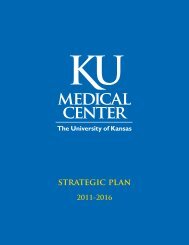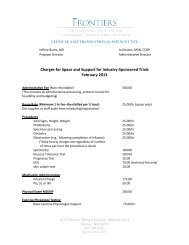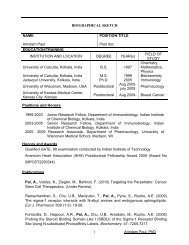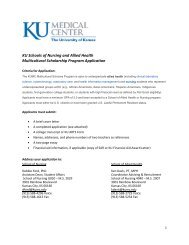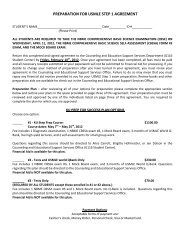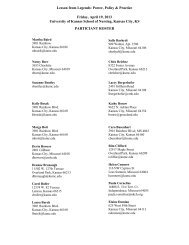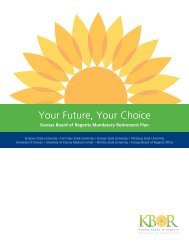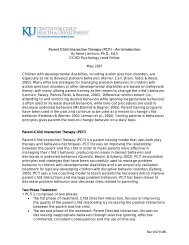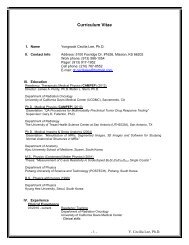Clinical Orientation Manual - University of Kansas Medical Center
Clinical Orientation Manual - University of Kansas Medical Center
Clinical Orientation Manual - University of Kansas Medical Center
Create successful ePaper yourself
Turn your PDF publications into a flip-book with our unique Google optimized e-Paper software.
LIST OF BOOKS<br />
As you will find, reading time is valuable during a clinical rotation. You will need to select<br />
textbooks which are both accurate and complete yet readable in the relatively short time in which<br />
a clerkship lasts. The following list <strong>of</strong> books and comments is compiled to help you make a<br />
selection as well as to inform you about what is available.<br />
Some resources that might help you save money: clerkship coordinators (for certain rotations),<br />
counseling center, other classmates/big sib’s who’ve completed the rotation already.<br />
HELPFUL HINTS on books and studying:<br />
1. Select books you feel you can read cover-to-cover during the one to two months <strong>of</strong> a<br />
rotation. It is important to get an overall view <strong>of</strong> a particular clinical rotation. Focus on the big<br />
picture.<br />
2. Once you have selected a book - read it. Don’t attempt to read several different books on<br />
specialized areas. Basically, pick one book.<br />
3. Use major textbooks (Harrison’s, etc.) when it is necessary to have more detail. When you<br />
want to read about a specific problem on one <strong>of</strong> your patients - Uptodate is a fantastic<br />
reference tool. Other reference texts such as Harrison’s can be utilized through Access<br />
Medicine.<br />
4. NMS review books as well as other review books are available to check out from the Student<br />
Counseling and Educational Support Services Office, Room G116 Student <strong>Center</strong> (588-<br />
4688), at no charge.<br />
5. Use the library. Many excellent reference books and atlases can be found there or online on<br />
AccessMedicine. Many <strong>of</strong> them can be checked out. If a desired book is not there,<br />
encourage the department to place one on reserve.<br />
6. Read about your patients - Know their problems.<br />
7. Do Questions to prepare for the shelf exam. Many students now use Pre-test books with<br />
questions which are meant to be significantly harder than the shelf, but are a good learning<br />
tool. On-line question banks include USMLEasy which you can access through Access<br />
medicine. You can select out different areas, but the disadvantage is that it does not<br />
remember the questions that have been asked previously unless you prescribe to the<br />
website. Some students use USMLEworld.com which is the question bank most <strong>of</strong> you will<br />
use for Step 2.<br />
GENERAL ESSENTIALS – These are a must have.<br />
1. EpocratesRx <strong>Clinical</strong> Drug Reference: Over 2,600 drugs and tables, including adult and peds<br />
indications and dosing, contraindications/cautions, adverse reactions, mechanism <strong>of</strong> action,<br />
formularies, black box safety information and pricing. One can run a multi-drug check for up<br />
to 30 drugs (www.epocrates.com). FREE. Not pertinent to get Epocrates, but it is a must to<br />
have some sort <strong>of</strong> drug reference.<br />
2. Quick <strong>Medical</strong> Reference, Maxwell: Easy place to get common things- everything from note<br />
writing and drug levels to dermatomes and mental status exam. Can fit in the front pocket <strong>of</strong><br />
your white coat.<br />
7



